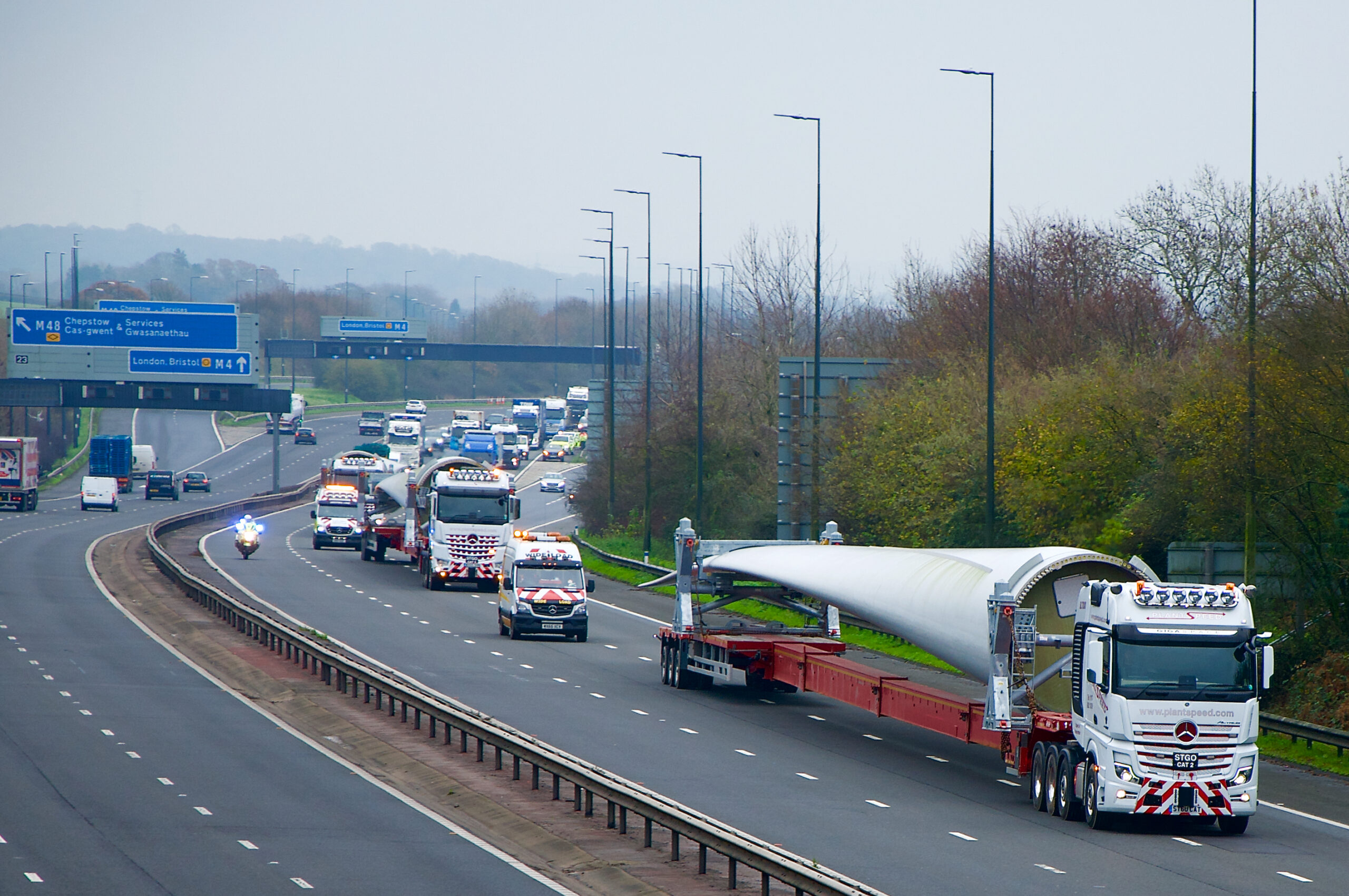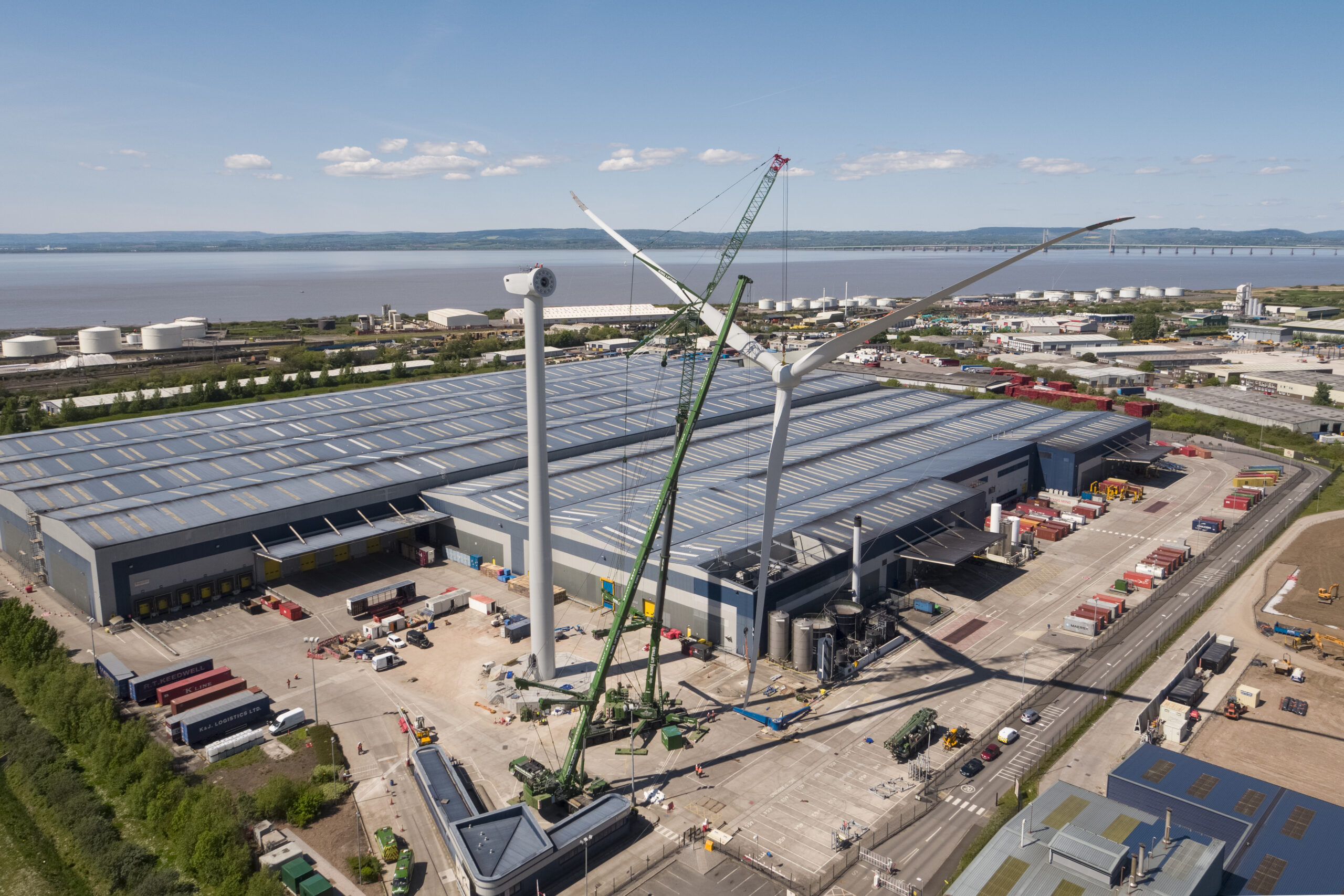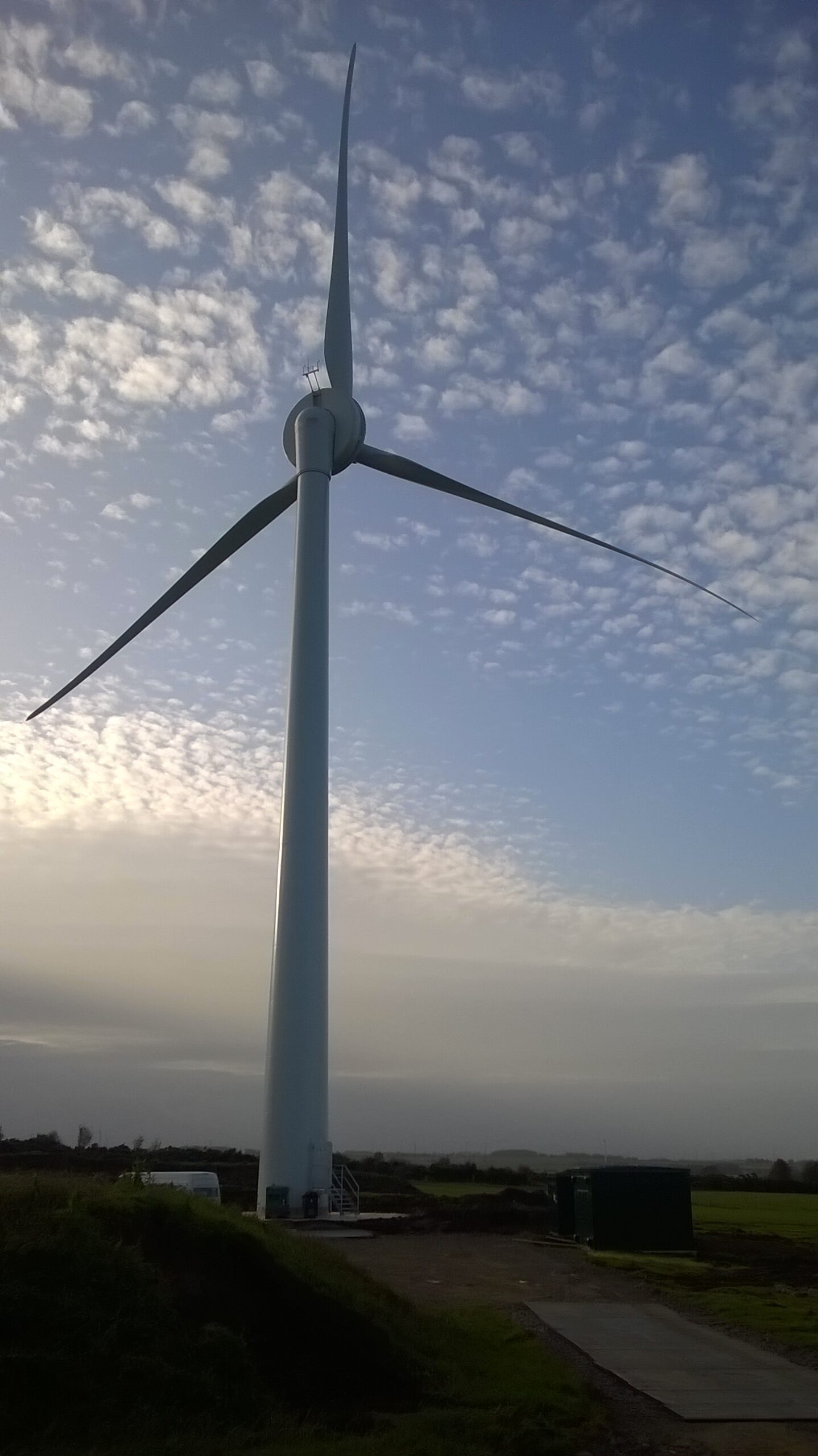When your brewery produces more than a billion pints of beer a year like AB InBev, your energy consumption is going to be pretty hefty.
And if your corporate commitments include brewing all your beers with 100% renewable electricity by the end of 2021, you’re going to need some large-scale wind or solar generation.
Our turbine in Magor, South Wales, provides nearly a quarter of the energy consumed at Budweiser Brewing Group’s flagship UK brewery. That’s 9 million kilowatt hours of electricity each year, supplied via private wire under a power purchase agreement (PPA), directly to where AB InBev’s beer gets brewed.
UK’s longest turbine blades
Given the local wind speeds and the maximum tip-height allowed under the planning consent, we needed to optimise around the total swept area of the turbine blades so we could harness the available wind as efficiently as possible.
This led us to blades that are 68 metres in length – which we believe are the longest ever to enter commercial operation on UK soil. They sweep through an area equivalent to two Wembley football pitches.
With a tip-height of 150 metres, the combination of blade length and engineering efficiency allows the Vensys V136 turbine to achieve an output of up to 3.5 megawatts. If we weren’t brewing beer with it, that would be enough to power 2,300 Welsh homes.
Working through the challenges
With blades of this magnitude, navigating the road network becomes especially challenging. So the direct route was dropped in favour of shipping them more than 800 miles by sea and into Bristol’s Avonmouth Dock, leaving just the last 20 miles to be negotiated by road.
While this made for some short-lived lunchtime tailbacks on the M4, it was a much simpler and less disruptive approach than the conventional trip across the country from an east coast port.
As turbines continue to grow in size, the logistical challenge means that future blades are likely to be supplied in multiple sections. Turbine towers are routinely transported in three or four parts and assembled on-site, but the more complex shapes have prevented this approach being adopted for blades.
As we now seem to have reached the limit for single-piece transportation, blade design will need to change and it’s likely that our 68 metre record will stand for many years to come.
Commitment to decarbonisation
As well as providing a quarter of the Magor brewery’s electricity, the wind turbine will also save more than 2,600 tonnes of CO2 emissions every year. That’s well over 65,000 tonnes of carbon savings during its operational lifetime.
This makes a significant contribution to Budweiser Brewing Group’s ambitious sustainability goals, and moves them closer to that 100% renewables target.
As Dean Robson, Managing Director of CleanEarth, said: “Too often corporate goals are not coupled with strong and effective action – but Budweiser Brewing Group were supportive at all levels, and acted throughout with a clarity that’s consistent with their bold environmental targets.”




